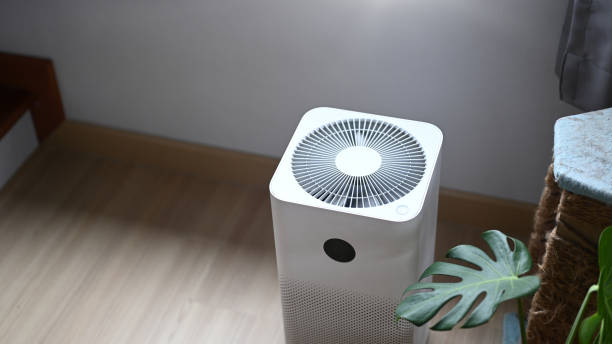Do you suffer from dry, irritating skin or stuffy noses and cracked lips? Congestion caused by low humidity in your home can worsen health conditions such as asthma. High humidity levels, however, are not any better since they can cause musty odors and even the growth of mold. The optimal relative indoor humidity level is between 30-50%, but many homes don’t maintain that range for various reasons.
To ensure healthy air quality in your home, it’s crucial to understand how uncommonly high and low levels of humidity affect our environment and learn strategies for regulating them. With this article, we’ll help you do just that: Understand why regulating indoor humidity is essential for your overall comfort and be armed with information about optimizing its balance.
Invest in a humidifier to add moisture to the air
While a humidifier may appear to be an unnecessary expense at first glance, investing in one can be beneficial in increasing the moisture content of the air within your home. A humidifier not only improves air quality and minimizes offensive odors but also helps soothe skin dryness and respiratory ailments caused by too little humidity. Inspecting the size of your room before selecting a humidifier is crucial, as this will affect how effectively it will raise indoor humidity levels.
After selecting the right unit size, you can make the necessary preparations by regularly cleaning and disinfecting the unit so that it runs efficiently when turned on. With proper care and maintenance involved, adding a humidifier to your home can be a great way to ensure that you can reap its benefits for years.
Place bowls of water around the house
Creating an optimal environment in your home requires careful consideration of temperature, light, and humidity levels. One of the most effective ways to increase the humidity and moisture in your house is to place bowls of water around the premises. This simple method creates a cool mist by gradually evaporating and raising the air’s moisture content without introducing a foreign scent or aerosol particles.
Placing water bowls near air vents or registers can also help improve airflow and the efficiency of HVAC systems. To further raise your home’s humidity, use a humidifier device or bubbling fountain to ensure the atmosphere maintains a comfortable level for occupants.
Run the shower for a few minutes each day to create humidity in the bathroom
Bathing and showering are among the most overlooked activities that can generate humid air in a home. When you take a hot shower, steam is released into the air, which raises humidity levels in your bathroom and other rooms nearby. To maximize the humid air this action creates, keep the door closed while taking a hot bath or shower to trap more steam inside. You’ll find that running water for five to 10 minutes daily increases your home’s humidity levels significantly.
Running the shower or humidifier on a humid day is unnecessary since humid air can sneak in through opened windows and doors. Still, it is vital to regulate moisture levels during the cold winter when humidity plummets.
Hang wet towels in different parts of the house
Increasing the humidity levels in your home can be done in various ways. One simple and cost-effective way is to hang wet towels in different parts of the house – it may not be the most aesthetically pleasing solution, but its efficiency must be considered. While dampening a towel on a hanger, remember that each one should cover a significant area for providing humidity to large areas of your dwelling.
For more effective results, changing the towels twice daily for optimal moisture absorption into the air is advised. Moreover, placing aesthetic containers with water near air vents or radiators would further boost humidification throughout your home. It’s essential to remember that maintaining an ideal humidity level in your home keeps harmful bacteria away from breeding and provides comfort from harsh winter days.
Keep plants in your home
Increasing the humidity in your home may benefit your health and your home environment. A great way to do this is by keeping plants in your house. Plants can release moisture into the air, helping raise the humidity in space naturally. Not only that, but they can help improve air quality by removing toxins and pollutants from the air while replacing them with fresh oxygen.
Keeping plants has health and aesthetic benefits – their foliage can add a touch of life to any room, while their vibrant colors will brighten up any living area. Consider adding a few plants to your home today and start improving the environment around you.
Utilize humidifying candles
Humidifying candles are an easy, low-cost way to humidify the air in your home. The humidifying agent is released into the air as the candle burns and helps increase airflow, making breathing easier. Candles come in various scents, so you can choose one that perfectly matches your home’s scent. Humidifying candles are also great for creating a relaxing atmosphere when you’re feeling stressed.
Humidifying candles can be used in any house room, but it is essential to remember not to leave them burning unattended or near flammable materials. Utilizing humidifying candles is an easy and cost-effective solution for raising the humidity level in your home and can be done with just a few simple steps.




















